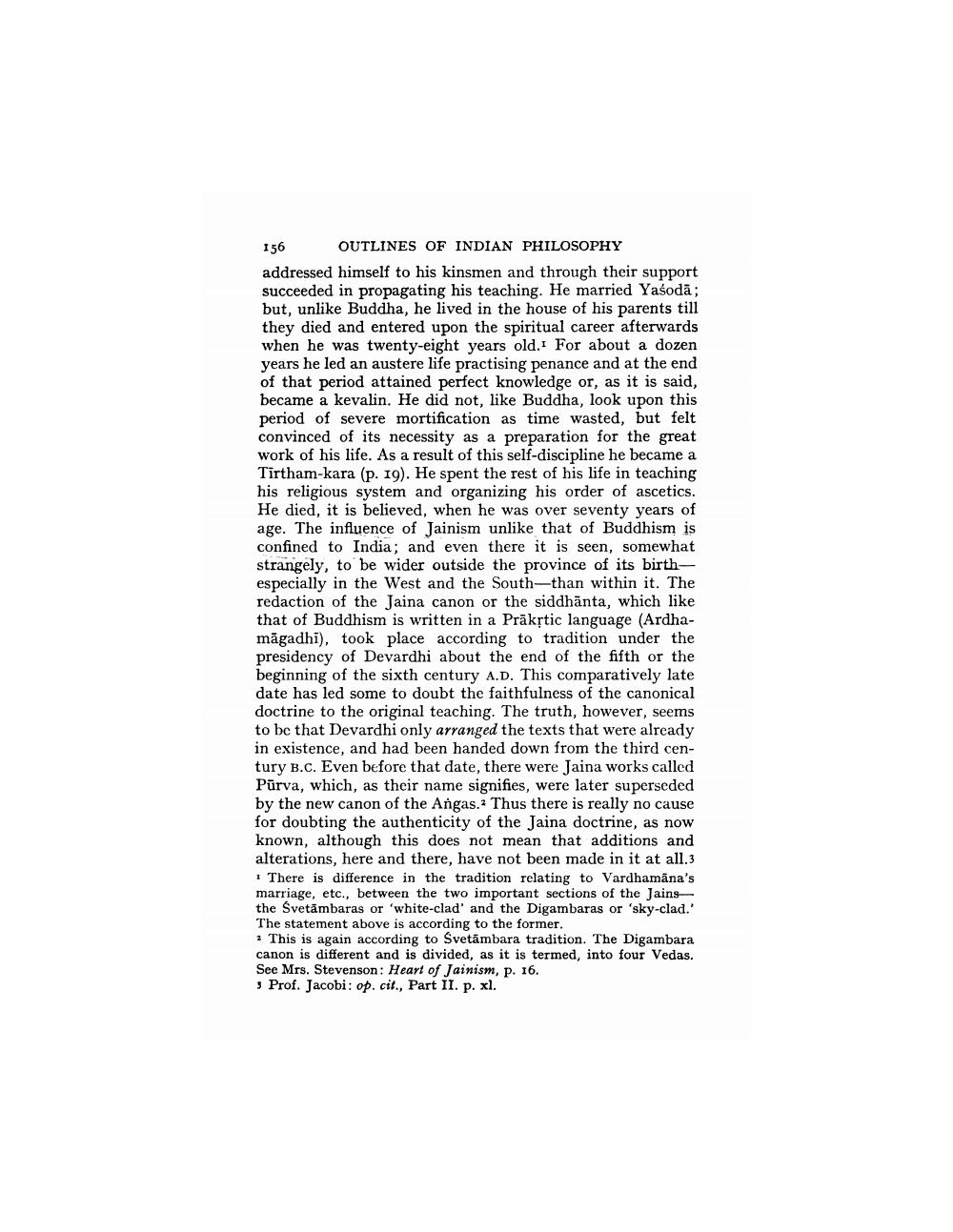________________
156
OUTLINES OF INDIAN PHILOSOPHY
addressed himself to his kinsmen and through their support succeeded in propagating his teaching. He married Yaśodā; but, unlike Buddha, he lived in the house of his parents till they died and entered upon the spiritual career afterwards when he was twenty-eight years old. For about a dozen years he led an austere life practising penance and at the end of that period attained perfect knowledge or, as it is said, became a kevalin. He did not, like Buddha, look upon this period of severe mortification as time wasted, but felt convinced of its necessity as a preparation for the great work of his life. As a result of this self-discipline he became a Tirtham-kara (p. 19). He spent the rest of his life in teaching his religious system and organizing his order of ascetics. He died, it is believed, when he was over seventy years of age. The influence of Jainism unlike that of Buddhism is confined to India; and even there it is seen, somewhat strangely, to be wider outside the province of its birthespecially in the West and the South-than within it. The redaction of the Jaina canon or the siddhanta, which like that of Buddhism is written in a Prākṛtic language (Ardhamagadhi), took place according to tradition under the presidency of Devardhi about the end of the fifth or the beginning of the sixth century A.D. This comparatively late date has led some to doubt the faithfulness of the canonical doctrine to the original teaching. The truth, however, seems to be that Devardhi only arranged the texts that were already in existence, and had been handed down from the third century B.C. Even before that date, there were Jaina works called Pūrva, which, as their name signifies, were later superseded by the new canon of the Angas. Thus there is really no cause for doubting the authenticity of the Jaina doctrine, as now known, although this does not mean that additions and alterations, here and there, have not been made in it at all.3
There is difference in the tradition relating to Vardhamana's marriage, etc., between the two important sections of the Jainsthe Svetämbaras or 'white-clad' and the Digambaras or 'sky-clad.' The statement above is according to the former.
2 This is again according to Svetambara tradition. The Digambara canon is different and is divided, as it is termed, into four Vedas. See Mrs. Stevenson: Heart of Jainism, p. 16.
3 Prof. Jacobi: op. cit., Part II. p. xl.




